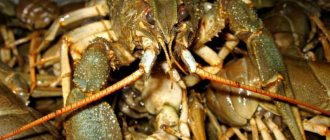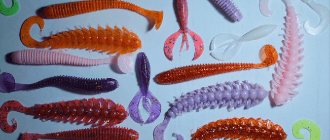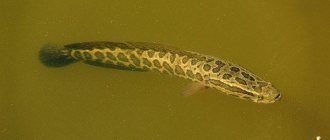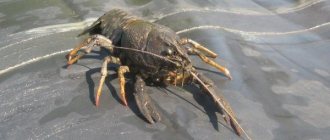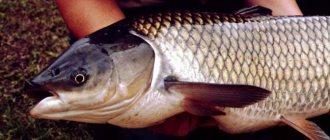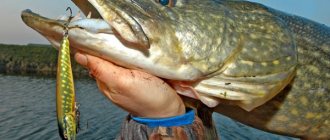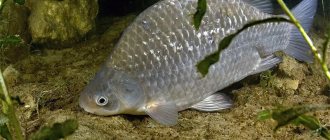What baits should I use in the crayfish trap?
Many fishermen noticed that someone was quietly eating their bait, or that the float was slowly but surely moving across the surface of the reservoir. The culprit in most cases could be common cancer. Crayfish are generally considered to be scavengers. This is true, since crayfish themselves do not hunt, but eat already dead inhabitants of the reservoir. Long-decomposed meat is less attractive to cancer. He will prefer a recently dead fish or even an exhausted dying fish to meat that will decompose within a few days. Contrary to the traditional idea of crayfish's preferences as a scavenger, it happily consumes plant foods, which amount to up to 90 percent of its diet.
The basis of the diet is:
- algae and aquatic plants;
- fallen leaves;
- shellfish;
- worms;
- insects and their larvae;
- tadpoles;
- dead inhabitants of the water world.
Only bait with a strong odor can lure crayfish from long distances, so the following baits are placed in crayfish traps:
- Fresh fish meat. For a strong smell, fresh meat is dried in the sun for several hours, after which it is cut so that the meat comes out and placed in a crayfish trap. Sometimes scales are removed from fish to enhance the smell. It is better to catch fish in the same reservoir (roach, bream, crucian carp).
- Canned corn, peas. The smell of sweet canned corn is very attractive to cancer.
- Bread with garlic. Pieces of rye bread are cut and chopped cloves of garlic are placed in it. The surface of the bread crusts is also rubbed with garlic. The garlic bread can be toasted a little in the oven. You can wrap it in cheesecloth to prevent it from getting soft and being eaten by fish.
- Mollusks, snail larvae from a local reservoir. They are collected near a pond or near the shore.
Choosing bait depending on the season
In the summer, the crayfish feeds on fresh plants and algae, and in the winter on fallen leaves. As a rule, it emerges from its burrow or shelter in the form of snags to feed at night. But it can move around a reservoir in search of food during the daytime, if the potential bait has a strong odor attractive to it, and there is little plant food in its habitat.
In the spring, when there is no plant food at the bottom, the best bait will be animal food rich in proteins. Fish meat, fillets, small fish would be the right choice.
In the summer, with the appearance of vegetation, you can use meat, as well as vegetable aromatic baits in the form of canned corn or peas.
In autumn and winter, the water temperature decreases, and, consequently, the rate of spread of odors in the reservoir. Therefore, the best bait would be rye bread with garlic, canned corn, or stale meat.
Best time to fish
During the main winter months, crayfish are practically not caught, as they are inactive and do not come out of their burrows. In the first spring months it begins to move, but is caught very poorly. Egg separation begins in May, after which a month is spent molting. At this time it is difficult to catch.
How to catch more fish?
I have been active fishing for quite some time and have found many ways to improve the bite. And here are the most effective:
- Bite activator. Attracts fish in cold and warm water with the help of pheromones included in the composition and stimulates its appetite. It’s a pity that Rosprirodnadzor wants to impose a ban on its sale.
- More sensitive gear. Reviews and instructions for other types of gear can be found on the pages of my website.
- Lures using pheromones.
You can get the rest of the secrets of successful fishing for free by reading our other articles on the site.
A variety of baits for catching crayfish using crayfish traps
When fishing, special attention should be paid to the bait. Cancers have a hypersensitive sense of smell. To make fishing productive, you need to choose a fragrant and attractive bait. The most common baits include:
How to catch more fish?
I have been active fishing for quite some time and have found many ways to improve the bite. And here are the most effective:
- Bite activator. Attracts fish in cold and warm water with the help of pheromones included in the composition and stimulates its appetite. It’s a pity that Rosprirodnadzor wants to impose a ban on its sale.
- More sensitive gear. Reviews and instructions for other types of gear can be found on the pages of my website.
- Lures using pheromones.
You can get the rest of the secrets of successful fishing for free by reading our other articles on the site.
- Bread and garlic . To prepare this bait, fresh rye bread is used. Holes are made in the bread and filled with crushed garlic. Thanks to garlic, a strong aroma is created that quickly spreads in water and lasts for a long time. If the crayfish trap will be installed overnight, then the bread should be placed in nylon fabric. This will prevent it from getting wet as a result of prolonged storage in water.
- Fresh fish and meat . Many people think that crayfish prefer to eat spoiled meat. Actually this is not true. You should use bream or roach as fish bait. You can also use frogs instead of fish and meat. Such baits should be used in late summer or early autumn.
- Canned peas can be used in winter to catch crayfish. In this case, the peas are poured into a gauze bag, which is tied to a crayfish trap. To add flavor to the bait, chopped dill is added to the peas.
- Grasshoppers , canned fish , makukha can also be used as bait.
In order for the bait to last for a long time, it must be secured correctly. To do this, you can use special bags, wire, elastic, hooks and other devices.
DIY crayfish baits
To successfully catch crayfish, you must not only choose bait, but also prepare it correctly if necessary.
To prepare meat bait, you can use store-bought fish fillets. It must be defrosted and left to dry for several hours, as it contains a lot of water.
Freshly caught fish must be cut. It is preferable to remove the scales, pierce and squeeze out the air bubble. Make transverse cuts along the body so that the smell comes from a larger area of the fish carcass.
You can dry the bread a little and rub the entire surface with garlic. You can make cuts in pieces of bread into which to insert pieces of chopped garlic. It is better to wrap the bait in gauze to preserve it.
Features of the bait
When thinking about what to use to catch crayfish in crayfish traps, you should remember that it is customary to use only products of natural origin . Cancer is an omnivore, so it is attracted to both fresh fish and bread rubbed with garlic. Some believe that crustaceans are attracted to the aroma of spoiled meat, but this opinion is erroneous.
If an arthropod is very hungry, then it can eat any food. However, given a choice, the crustacean will give preference to:
- fresh meat,
- fish,
- garlic-rubbed bread.
If catching crayfish with crayfish is combined with fishing, then you can use the caught small fish as a means of baiting them. You can use not the whole fish, but only its head.
If a whole fish is placed in the crayfish trap, then the air bubble must be pierced in advance, otherwise it will float. Clams are another bait that crustaceans really like. Their shell needs to be opened with a sharpened blade and placed in a fishing device, then the crustaceans will be caught very quickly and easily.
In summer and autumn, catching crustaceans is organized mainly for the purpose of obtaining meat. You can also lure them with corn or peas. You just need to boil the cereals in water with a little salt, place them in the sink and send them straight to the crayfish trap.
Attaching baits
Shells can have different designs. When casting, the bait should be inside the crayfish trap with the expectation that it will not fall out and the crayfish will not be able to reach the bait from the outside. To do this, the bait must be in the lower part of the crayfish when it falls to the bottom. Attach the bait in the following ways:
- tie the bait with fishing line or wire to a net or frame;
- placed in a mesh bag;
- secured with an elastic band;
- using a pin, etc.
When making a crayfish, you can knit a pocket for the bait in advance.
Traps can be open or closed. Closed ones are more practical; it is more difficult for cancers to get out of it.
They are lowered to the bottom carefully; the structure should lie completely on the bottom and not hang on the grass. Crayfish traps can be installed 20 - 30 meters apart. They need to be checked no earlier than three hours later, but it is more profitable to install them in the evening and check them in the morning.
firstfisher.ru
Rachevnya from a plastic bottle
This gear is considered the simplest of its kind. But despite the simplicity of execution, it can please you with a good catch.
To make a crayfish shell with your own hands from a plastic bottle, we will need:
- 5 liter plastic bottle
- Scissors
- Fishing line or wire
- Awl
- Nail
- Rope

So, let's start assembling the shell.
- First of all, take the bottle and cut off the top part of it (along with the neck). This is approximately 5-7 cm from the beginning of the neck.
- Turn the top part over and insert the neck into the inside of the bottle. Thus, the cancer will crawl into the bottles and fall into the middle, and to get out it will have to try really hard.
- We need to connect these halves together using fishing line or wire. We make holes for connections with an awl.
- Now you need to make holes in the bottle itself for better air release. To do this, heat the nail and start making holes.
- At the bottom we attach a weight and a hook for bait. It is more convenient to do this by removing the top part of the shell and then fastening it again.
- In the place where the two halves join, we tie a rope or thick fishing line, 3-5 m long.
Read here Summer girder: a step-by-step description of how to make it yourself and how to catch fish with it (105 photos)
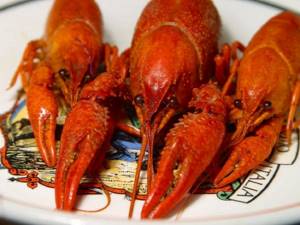
Already near the reservoir, we attach the bait to the hook, hold the trap by the rope and throw it directly into the water. On the shore we tie the cord to a peg or tree. We are waiting for the catch.

Habitats of arthropods
Crayfish live at a depth of 0.5-3 m. They choose places without silt, where the soil is solid. This is due to the fact that on a muddy, sandy bottom, as well as in flat and clean shallow water, crayfish will not dig a shelter for themselves.
Crayfish also settle on rocky bases, where there are many shelters, or on the bottom, which is suitable for digging holes. Crayfish burrows can be seen in coastal holes or under steep banks.
In the best places, large males make burrows
Often they are on the verge of crossing the hard and soft bottom. Crayfish dig holes up to one meter deep. The entrance is often hidden under a sunken tree trunk, the roots of willows growing above the shore, or stones.
The habitability of the hole is indicated by the presence of freshly dug soil near the hole. Also, the owner can be driven out of the hole by the strongest enemy. That is why the holes themselves are narrow, so that the crayfish can close its claws in it from the enemy.
The young settle in shallow water near the coastal line, under branches, stones and leaves. Females and weak males stay a little further from the burrows of large males and in less favorable areas. Such as, for example, under the roots of reed thickets.
How to catch
Good results in catching arthropods can be obtained on a cloudy day; at this time, the behavior of the crayfish is no different from night outings in search of food.
Catching crayfish with a closed and open crayfish trap differs slightly. An open trap requires more frequent checking of the gear; a closed trap can be left overnight or for a longer time. Cancer will not be able to get out of a closed structure on its own.
To install both types of crayfish traps, select a place with a steep bank. It is advisable that there be some hiding places for the crayfish underwater. You can count on a large catch of crayfish where there are large stones at the bottom of the reservoir, under which the crayfish make their burrows.
Reservoirs with low oxygen content, dirty water, and a sandy bottom are practically unsuitable for catching crayfish. The depth of the reservoir does not matter when catching crayfish. If there are all conditions for the life of crayfish at the bottom, then they can be found both in deep-sea places and at a depth of no more than 0.5 meters.
At night you can catch crayfish with greater success than during the day. You can leave closed traps overnight and check the gear in the morning. Good results in catching arthropods can be obtained on a cloudy day. At this time, the behavior of the crayfish does not differ from night trips in search of food.
An excellent place for catching crayfish can be areas of reservoirs where water is pumped from one reservoir to another. During the operation of the pumping system of such water pumps, small fish are injured and there is always a large amount of food for crayfish in such places.
To fish near water pumps, it is not necessary to stock up on bait ; you can use a fine-mesh net to catch a fish floating belly up, cut it, and secure it in a trap to catch large numbers of arthropods.
Crayfish bait
Below are the most commonly used baits for crayfish fishing. They can be combined. A good result is achieved by alternating fishermen at the fishing spot with various baits. For example, in one farm there will be fresh meat, and in another there will be rye bread.
Fresh fish or meat
The best option for catching crayfish is fresh meat or fish cut lengthwise and turned inside out. You can also cut it into small pieces and wrap it in cheesecloth.
You can add fresh dill leaves to the bait. He does not disdain frog meat or grasshoppers.
Such baits are used from spring to early autumn.
Moldy stuff
Although it is believed that crayfish eat rotten meat, they still prefer fresh meat. Most likely, this stereotype comes from the fact that crayfish concentrate in large numbers while feeding under the corpse of an animal.
When using rotten fish or meat, cut the bait along the back down to the vertebrae. This is done in order to turn the meat inside out.
An alternative to such bait would be fresh bird entrails, which are lightly fried in unrefined sunflower oil. This bait can be used until it is completely rotten.
Rye bread with garlic
Take fresh rye bread. The crust is rubbed with garlic, a hole is made in the crumb, which is then filled with crushed garlic.
When using such bait for a long period, it is prevented from swelling. To do this, the bread is placed in a bag made of nylon fabric or gauze.
You can also make a uniform mass of such bait. To do this, pass all the ingredients through a meat grinder. This bait is used in the warm season. You can use a few mint leaves to complement the garlic.
Peas
In winter , crayfish prefer plant baits.
The most justified and catchy bait is canned peas. The peas are poured into a gauze bag. After which the bag is attached to the clamshell. To enhance the aroma of peas, it is recommended to add ground dry dill or its seeds, passed through a coffee grinder.
An alternative to canned peas is boiled pea porridge, which is moistened with any vegetable flavoring. For example, flax oil.
Cake
Sunflower cake is a universal bait for any time of year. It is better to buy cake made from roasted sunflower oil. In other words, this oil is called unrefined.
If you have a choice in purchasing cake, it is better to buy pressed pancakes. They take longer to liquefy in water and can be used several times in a mesh bag.
Bait
Crayfish are pond nurses, so they prefer to feast on corpses. That is, meat, and in particular rotten meat. To catch them, you can also use fish (sprat, capelin, etc.), chicken offal and even bread with garlic.
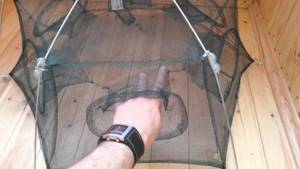
We wish you a good catch!
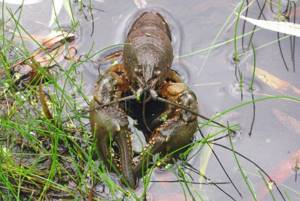
Choosing a shell
Rakolovka is also called recheshna or early. It is made from a mesh of wire or wood. The simplest design is the following: a mesh is stretched over a circle with a diameter of 0.5-0.7 m so that it sags in the middle. This crayfish-grip (crawfish-plate) performs well in slow currents and depths of up to 1.6 m.
Other designs are more complex; several rings or other geometric shapes made of wire of different sizes are used as the basis of the frame. To connect them together, a fine mesh is used.
Rakolovki are divided into two main types. These are open and closed. Let's look at them in detail.
Open
The already mentioned above-mentioned clamshell-plate belongs to this type. The main difference between open crayfish traps is also the method of attaching the main cord by which they will be lifted.
Ropes are attached around the perimeter of the circle, joining them together at a distance of 0.5 m from the center of the crayfish trap. The main cord is tied to them, thanks to which the tackle will be lowered into the water. To prevent the crayfish from turning to its side, the limiting ropes along the crayfish boundary are equal in length.
There are slightly supplemented designs where another hoop of the same diameter is used and a mesh 12-15 cm wide is fixed between the hoops.
Structurally supplemented crayfish-grips are also classified as open crayfish traps.
Improved crayfish-plates consist of a large and small hoop. Accordingly, they are attached parallel to one another, but the small circle is located slightly higher than the large one and is not covered by the mesh.
Another improved clamshell is the inkwell. Structurally, it already has three hoops, the smallest is fixed in the middle of the second upper circle. The result is actually an isolated subspace.
Closed
Such devices are cylindrical structures 2-15 m long made of hoops. This is in the case of a lying structure. Although they often use smaller ranches. Their shape can be round or rectangular.
So, the simplest design of this type will be assembled from two hoops connected by a spring. Holes for crayfish entry are located at the ends. They are made from small hoops connected to large mesh and placed inside.
As an option, the rachevnya can be woven from aluminum wire in the shape of a large egg (up to 60 cm long), the blunt end of which bends inward and becomes a cylinder-collar. The hole at the collar is made 3-4 times smaller than the diameter of the blunt end of the egg. A solid disc-lid is made at the blunt end slightly larger than the diameter of the hole, in the middle of which a rope is tied and passed through the entire crayfish trap.
The other end of the rope is brought out through the second hole of the rope opposite the sharp end of the same diameter as the blunt one. This shell is placed horizontally so that the bottom cover does not cover the hole. Raising the rack of this design does not require skill; just pull the rope and stand vertically at the rack and close the bottom with a lid. The version of the fishing tackle just described is an average in design between the crayfish catcher itself and another type of gear, namely a mesh.
Variations of closed ones include compact umbrella shells with several entrances. Their superiority is their small size and ease of removing the mesh from the base of the frame.
When fishing over a large area of a reservoir, long fishing lines with many entrances . They are prepared on the shore and then thrown to the bottom.
When catching crayfish , folding crayfish traps are used. Their design is designed to fit into a cut hole and is fully opened under the ice. When they are lifted to the surface, they are folded again, thereby making them compact.
Operating principle
- The bait is attached to the bottom of the crayfish trap. One of the methods described below.
- They lower her into the water.
- They wait for the crayfish to climb onto its surface or inside. Approximately no less than half an hour. More time may pass. Trivial advice: large specimens of crayfish sneak up on the bait later, driving away the young ones. So it’s worth trying to leave the crust on the bottom longer.
- Raise the crayfish trap sharply and carefully to the surface so that the crawling crayfish do not run away.
Methods for attaching bait in a crayfish trap
Let's look at all the ways to attach bait to a crayfish trap. The choice of attachment method depends on the type of bait. If the bait is combined, then to secure it to the bottom of the crayfish trap, appropriate methods for this bait are used. Only in this case, the main thing is that the various baits do not cover one another.
And another piece of advice - don’t pile up a lot of bait in the camp.
Tie with an elastic band
The most successful options for attaching bait with a rubber band are the following:
- A rubber band is used, which is wrapped around the bait several times.
- In the center of the shell, a rubber band is pulled like a string several times. The bait is placed under the rubber band and placed in the next one.
Put on a pin
Small bait (such as grasshoppers, worms and mole crickets) can be attached to a pin, which is threaded through the holes of the mesh.
Another option is to attach a piece of bait to a regular connecting small carabiner. Having previously made a hole in a piece of meat with a slate nail. The carabiner itself is attached directly to the mesh of the rachevny.
Place in a mesh bag
Bulk bait is placed in mesh bags. If it is not possible to use a mesh to sew the bag, then use gauze or old nylon stockings. In this case, additional holes are made. By the way, you can also use old fine mesh stockings.
Tie with wire
You can also tie the bait with wire or pierce pieces of meat, fish or other large and insoluble bait.
As an option, the intestines and large earthworms are put on a wire with a stocking. In this case, it is easier to attach them to a crayfish trap and combine them with additional bait.
Use a special hook to secure
It is convenient to place soft and medium bait, as well as rotten meat or, for example, a dead frog on a special hook, which can be found on sale.
As a replacement for a special hook, you can use fishing single hooks No. 14-16 or smaller tees. When using fishing hooks, take 5-8 of them per rack. Secure the hooks with fishing line to a wire wound to the bottom of the trap.
Tips and tricks
- When using an open crayfish, you need to wait for the crayfish to crawl onto the bait. After which they take it out sharply but carefully, trying not to knock it over.
- You can also leave a closed type clamshell overnight, for a day or several days. This depends on the size of the crayfish trap; the larger it is, the less frequently it is checked.
- The shape of the crayfish depends on the number of crayfish you want to catch. A round shell with a diameter of about 40 cm can catch 10 crustaceans at a time.
- Option for installing an open shell.
Closed shells are installed from a boat or with a long pole from the shore. A float (plastic bottle or piece of foam) is attached to the top. You can also stretch a rope, thanks to which the crayfish trap will be fixed on the shore. - Another option for installing gear is to fix the rope from it to the stick. Even a child can master this fishing option. Because he won’t lose his tackle.
- Install each subsequent crayfish trap at a distance of 10 m from the previous one and at different depths. It is enough to use from 3 to 10 crayfish traps per person.
- If you plan to catch adult crayfish, use crayfish nets made of polyethylene fishing line. In the case of catching young crustaceans that still have a soft shell. It is better to use a crayfish catcher with nylon or cord threads. Such a net will not damage the shell of the young.
- You can use spoiled cabbage, banana peels and fruits as bait. Crayfish especially like overripe pears and melons.
- You can add a little blood to sunflower meal and pea porridge to attract crayfish.
poklevok.net
How to make a clamshell with your own hands
Making a clamshell with your own hands at home is not at all difficult if you have all the necessary materials and tools.
It is also advisable to prepare a design drawing in advance in order to make the rack exactly to size.
For beginning craftsmen, making the first shell can take quite a long time. But over time, you can learn to make rachens right on the shore, for example, from an ordinary plastic bottle.
But it is still much better to make a crayfish trap at home, from durable materials, so that the structure will last for more than one season. Here are two options for simple crayfish traps - from a plastic bottle and a regular mesh.
From the bottle
A shell made from a 5-liter plastic bottle is the simplest design option. To make it you will need the container itself, a knife, wire or fishing line, a weight and a rope (Figure 2).
Types of crayfish
Buying a crayfish catcher in our time of modern flexible trade, when businessmen are sensitive to demand, has become as simple as buying fishing gear. And this was a big problem not so long ago. I had to make everything with my own hands literally from what I had.
Nowadays, sometimes it’s easier to go to a fishing store and buy the necessary equipment for fishing and catching crayfish than to engage in the cave production of the necessary rods and crayfish traps. In addition, it is possible to purchase both at a reduced price from reliable online stores.
The best crayfish traps can produce a ton of arthropods if used in the right place, with the right bait, and at the right time of year. But it is impossible to say with complete certainty which of the crayfish traps is the best. All of them were invented by cunning lovers of crayfish and making money on crayfish. And each of them is designed for certain fishing conditions in a particular body of water. Namely: for shallow or deeper places, for a certain soil at the bottom, the number and density of crayfish in a given place and, of course, for a specific time of year.
Models of crayfish traps can be very different, from an ordinary mesh fabric made of raspberry, stretched over a simple wire frame, to almost industrial crayfish traps measuring more than fifteen meters and equipped with many chamber traps. The latter bring the largest catches of arthropods, especially valued by gourmets in the autumn season. But these multi-chamber closed-type crayfish catchers, due to their bulkiness, require the participation of not one person, but at least two catchers in installing the crayfish catcher. This is to some extent a more expensive activity, speaking of physical and material investments. But at the same time, the return can be much more efficient and productive.
Buying a clamshell or building one yourself is one of the first tasks. But you need to know for what purposes and needs this crayfish trap will be used. Therefore, it is necessary to first get acquainted with all the most common types and varieties of crayfish. So, let's begin.
The simplest type among crayfish traps for crayfish fishing, as we have already found out, is a primitive crayfish trap made of a mesh on a frame. This is gear that is easy to build right on the shore while relaxing or fishing. Even a piece of netting thrown by someone, hanging in shreds on the willow thickets, may be suitable for this. Such scraps often remain after spring fishing during high water. You just need to stretch the mesh onto a frame made from what is available on the shore: wire, reinforcement, or even willow twigs. If the frame is metal, then additional loading will not be required. But for a shell made of mesh and willow twigs, you can tie a piece of brick in the center. Here you can then grab a fish with wire or rope, which will serve as bait for crayfish. All that remains is to throw such a simple crayfish catch at night under a steep river bank with a clay or sandy bottom. And the very next day of relaxation by the river, there is a chance that for a snack with a cold beer you will have freshly boiled crayfish in salt water, red and juicy. This, of course, is not fishing gear, but rather improvised, but it serves as an example of the work of a crayfish catcher and the simplest way to get crayfish for food. For similar catching of crayfish, you can also use factory-made little fish, which are used to catch small fish for catching predators with live bait.
The best crayfish are predominantly closed-type gear due to their productivity, but, as already mentioned, they are more bulky and require two or more participants in the crayfish fishery. Classic open-type crayfish traps, more complex than the frame-based meshes described above, are used most often among crayfish fishing enthusiasts. This is a device consisting of two metal hoops of different diameters. The lower hoop is larger. Usually this is a round frame with a diameter of 70 cm. The mesh, which fits both hoops, converges into a cone on the upper hoop of a smaller diameter. Wire stretchers are connected in the center of the crayfish and attached to a cable, cord or wire, which in turn is attached to a pole on which the crayfish is lowered to the bottom of the reservoir. Such crayfish traps can be checked less often than lifts, from whose mesh crayfish can easily escape. From a double open-type crayfish trap, crayfish shoots occur less frequently.
Models of shells of an open, but more complex type, which are called “inkwells”, are only slightly modified. In essence, these are the same double traps that were discussed above, but they also have a mesh funnel through which crayfish easily get inside the trap, but it is almost impossible for them to get back out.
Closed-type crayfish crayfish cages are distinguished by their multi-chamber design, where many crayfish individuals can accumulate. This is most often a trap extending for fifteen meters, the beginning and end of which are fixed at the bottom with stakes or weights. Each chamber of such a trap has a separate entrance. This determines the high productivity of this clamshell. There are closed shells of a more compact type. In them, the cameras are located in a circle. Such shells are also called umbrellas. Despite their compactness, these traps are quite difficult to install and are best placed by two or more trappers. But an experienced fisherman will install such an umbrella type farm alone.
Buying a crayfish trap in the form of the well-known “muzzle”, more accurately called the top, is now also not difficult. In any fishing store there are all these tops, venteri, zhaks, that is, set traps for catching crucian carp, tench and other fish, including even predators, which, although not often, are caught in these tackles, especially in the spring. large and muddy water. The top or muzzle is a cylindrical mesh trap of different sizes, where at the end parts of the trap there are entrances for allowing fish, and in our case, crayfish, into the trap. During the reverse movement, some of the crayfish can get out, but most arthropods remain trapped. Such traps have a folding design and are fixed at the bottom with poles or with the help of a fairly powerful spring, which expands the trap and keeps it in the assembled position. Its similar hems and wings are distinguished by the fact that they are equipped with additional elements in the form of mesh wings, which seem to invite crayfish and fish traps inside. Moving along these wattle wings spread on the sides, living creatures will certainly fall into a trap.
How to make a simple crayfish catcher
The simplest crayfish trap, which can be made directly on a pond while relaxing or fishing, is a piece of mesh stretched over some wire frame found on the shore or even over a simple frame made from willow twigs. You just need to firmly tie the corners of this improvised frame. It wouldn’t hurt to add additional reinforcement elements by placing a couple more rods crosswise inside the frame and tying them just as tightly to the main frame. You can even use a piece of Chinese net hanging somewhere on the bushes as a net. Such scraps are often found after spring floods. If you suddenly have wire for the frame at hand, then the finished primitive shell does not need to be loaded, provided that the wire is massive and heavy. If the frame is made of branches, then you need to secure a piece of brick in the center, tying it with twine. The line won't move, the load will slip out. All that remains is to put the fish in the center of the crayfish trap, also grab it to the net with string and you can throw our homemade crayfish trap into the place where, according to assumptions, crayfish should be found. From time to time it is necessary to check the gear, since the crayfish caught in the traps will periodically escape from our primitive crayfish trap. Crayfish fishing usually takes place at night. Therefore, a good flashlight is necessary.
Which clamshell to use in winter
The best crayfish traps for catching crayfish in winter are not closed-type traps, since you cannot push a fifteen-meter closed-type multi-chamber crayfish trap into a hole in the ice. Moreover, if winter is in full swing, when the ice often reaches a thickness of 70 cm or more. Therefore, the most common crayfish traps for catching crayfish from ice are double open-type traps, arranged like a “clamshell”. Why this type? Such “folding beds” are foldable. The guy wires can be folded and, when loaded, assume a working position. This makes it possible to immerse the crayfish under the ice without cutting a large hole under the full diameter of the assembled crayfish, but by pushing it flat into a narrow hole-crack. At the bottom, held up by a strong cord, the crayfish catcher is automatically assembled into its working position, capturing the crayfish that have gathered towards the bait.
Rating of shells that can be bought in the online store
Models of crayfish, which are sold in fishing stores, as well as in online fishing and hunting stores, do not differ in anything special and, in fact, consist of several products listed above. And now in more detail and in order.
Clamshell
This is the most popular and widespread trap, which is also a universal tackle, since it is equally effective at catching crayfish both in open water and during the ice season. Folding beds cost from 300 to 3400 rubles. Such traps are called “grasps”, since they work on the principle of a mouth, slamming shut after the trap begins to rise to the surface of the water and to the shore. This is achieved by a folding structure, which in an instant turns from a flat mesh on which the crayfish crawl into a cone-shaped closed trap, from which the prey can no longer escape. But, given the working arrangement of the crayfish in the form of a flat surface, you should check these crayfish relatively often. The frequency of inspections is determined empirically for each reservoir and season separately.
The diameter of the lower ring of this shell is 40-60 centimeters. The upper ring has a diameter of 27-30 centimeters. Hoops are usually made of galvanized steel. The nylon mesh that covers them has a mesh size of 16 mm and is most often painted green.
Shell-inkwell
This double open trap is very similar to the clamshell trap except that the top of the cone has two hoops instead of one. This is what makes the crayfish similar to a school non-pouring inkwell, which was used by students of Soviet schools in the twentieth century. Only there the ink did not spill through the funnel in the upper part, but here it is difficult for the crayfish to get out and escape. These two rings, covered with mesh, also form something like a funnel. These crayfish traps are checked less frequently than clamshell traps. The cost of inkwells ranges from 359-4650 rubles.
The parameters of the clamshell inkwell are almost the same as those of the clamshell. The diameter of the lower ring is 60 cm. The upper rings are 20-30 cm. The material of the rings is galvanized steel. The mesh is made of nylon and also has a protective color. The cell is standard – 16 mm.
Accordion shell, stocking
This closed crayfish trap is already an order of magnitude higher than the traps mentioned above, both in terms of parameters and efficiency. The price of such traps ranges from 800-4000 rubles, depending on the length and number of entrance holes. Usually these are 16 sections with 12 holes. The length is usually about three meters, although there are more massive traps. The design of the shell is made of square steel hoops, on which a mesh of fishing line is stretched. Grid cell – 10 mm.
Unlike bulky traps up to 15 meters long, this crayfish can be cast even by one person, right from the shore. To do this, bait is placed in the entrance holes, most often it is a fish, and then, holding the trap with one hand, we throw it into the water with the other hand. We pull the trap using a cord tied to the front of the crayfish trap. There is a hole at the outlet of the rachen, which is closed with a cord. When it is necessary to get the caught crayfish, the cord is loosened and the crayfish are poured out through an open hole into the container.
These crayfish traps are mobile prototypes of industrial traps, which are effective gear and, meanwhile, one fisherman can safely catch crayfish with these devices.
Spider shell
This is a multi-chamber closed folding umbrella-type trap, which has already been discussed above. There are about six entrance holes in crayfish traps of this type. The cost of such crayfish ranges from 700-850 rubles, depending on the parameters of the shell. The shape is square polygonal with a mesh made of fishing line with a cell of 4 mm. The frame is made of galvanized steel. The size of the shell is usually one meter by one meter.
Fishing tops
These, essentially fishing rods, are no less successfully used for crayfish fishing. Their cost in online stores ranges from 800 to 3000 rubles, which also depends on the size of the gear. These are folding structures made of steel rings with an outer diameter of 53-60 cm and a length of more than 120 cm, covered with a green nylon mesh with a mesh size of 20 mm. There are usually six spacers that provide structural rigidity. The entrances are located at the ends of the top. There are also gear-tops with one slot-type entrance. The folding design allows you to transport the top with convenience and safety, in addition, it makes it possible to cast the top even from the shore. At the bottom, the tackle automatically assumes its working position. This is facilitated by spacer ribs and springs.
ribalka-vsem.ru
Fishing rules
A place for catching crustaceans should be chosen near a steep slope. It will be good if there are a lot of shelters at the bottom where crayfish can live. In addition, crustaceans often live in burrows under massive stones.
It should be remembered that very polluted reservoirs with a sandy bottom are not suitable for hunting crayfish. In this case, nothing depends on the depth. If all the necessary conditions are present at the bottom of a river or lake, then crayfish can live both in the shallows and in the depths.
It is most effective to catch arthropods at night. Therefore, many fishermen set closed traps until the morning , after which they check it. You can also get a pretty good catch in cloudy weather.
The shell needs to be placed directly from the shore. If numerous traps will be installed, it is better to use a boat. In order not to lose the device, you need to attach a piece of foam plastic to it on a rope.
Types of crayfish
Open
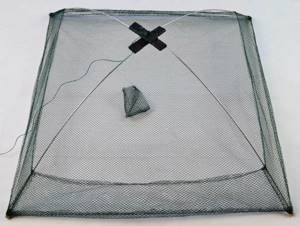
They look like a metal hoop (or 2-3 hoops) covered with a mesh. Ropes are attached along the entire perimeter of the hoop, connected to each other at a distance of 0.5 m from the base of this trap. A cord is attached to them, with the help of which the crayfish can be lowered into the water. To prevent such a device from tilting to one side during use, the holding ropes must be the same length.
Open-type structures also include more complicated structures, which are made from two circles with different diameters. They are attached parallel to one another, the smaller circle is placed slightly above the second one, without tightening it with a mesh, in order to leave an entrance for production.
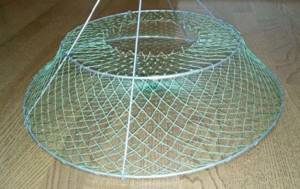
There is also a more improved version of the open shell - the so-called “inkwell”. It already consists of 3 circles, the smallest of which is fixed inside the second upper circle, thereby creating an almost closed space.
Closed
Such crayfish are very catchy. Sometimes they are also called night houses or crayfish houses. Catching crayfish with closed crayfish traps is much more convenient than open ones, but they are more difficult to manufacture. They are often made foldable for ease of transportation. The main advantage of closed crayfish traps is that they do not require frequent checking. They need to be checked no more than 2-3 times throughout the night, otherwise they can even be left until the morning. There is no need to fear, as is the case with the use of open-type crayfish traps, that the prey, having eaten enough of the bait, will run away.
Types of closed shells
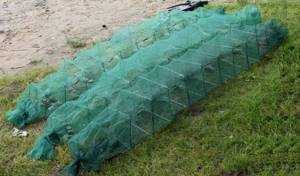
Multi-entry devices - have a rectangular cross-section, their length can be 15 m. Thanks to their impressive length, they can cover a significant part of the bottom, thereby increasing the likelihood of a rich catch.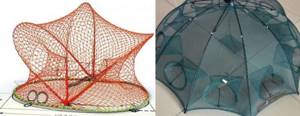
Collapsible multi-entry shells - can have a variety of shapes. Such traps can have 8 inputs. Installing and checking them is quite simple.
A device made of two mesh-covered hoops - in this case, a leaf spring is placed between the circles, with the help of which they repel each other. This feature allows you to install such a clamshell quickly and without much effort.
The shells can be made of nylon net or polyethylene fishing line. The first option is advisable to use for catching soft young fish, so as not to damage them with hard material in the process. For adult crayfish, the second option is quite suitable.
The cost of crayfish can vary depending on the season, material, manufacturer, size and model. An inexpensive, easy-to-use crayfish trap is perfect for beginners. The catch in such crayfish traps will be slightly less than in complex models, but they are completely simple to use.
Which price category should you prefer?
The price of crayfish varies greatly, depending on the size, model, country of origin and season.
Knowing some of the nuances allows you to purchase a crayfish trap with the greatest benefit:
- You don’t have to be afraid to buy simple and cheap crayfish traps ; they are quite suitable for beginners and allow you to catch fish and crayfish quite successfully. Their difference from long and complex devices is a small amount of catch and the greatest ease of use.
- During the summer and early autumn, most domestic and foreign stores hold seasonal promotions that allow you to purchase a crayfish fish trap 20-30% cheaper than the market price.
- For beginners, it is better to choose domestically produced crayfish rather than Chinese analogues. The latter, despite the lower price, often turn out to be a disadvantageous purchase, because They consist of less durable and high-quality materials and can quickly fail if handled carelessly.



